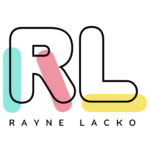Opting to self-manage the publication of your book can be highly lucrative–and personally satisfying. For writers clutching a coveted publishing contract with a large publishing house, most of the marketing and promotion is still left to the one who wrote the book, with royalties split among agents, publishers and distributors. To earn more money and maintain control, the option of publishing yourself is worth checking out. But how?
R.S. Gompertz author of No Roads Lead to Rome has let us in on all the juiciest details: how he got started, what programs really work, and what kind of sales to expect. He’s even thrown in a coupon code to collect his E-book at a discounted rate. Now that’s an enterprising writer!
Here is his advice:
After a round of unsuccessful submissions, my first agent left to work on the digital side of a major publishing house. When my second agent suggested I rewrite my novel from her point of view, I realized what every indie rock band had known for years: Given how easy it is to publish and distribute, my success would boil down to talent and grit.
Just as iTunes turned the record industry on its ear, digital editions are transforming the publishing industry. So in October of 2009, I took the leap with a print and digital edition of my novel, “No Roads Lead to Rome.” (For the record, I also invented a new literary genre that derives from the equation: Farce + Satire = Fartire.)
I quickly found that E-books are to new authors what iTunes are to indie rock bands: an easy way to get your message out, generate some buzz, learn how to market and establish a platform for your work.
I use Lightning Source (LSI) for my print editions. They also have an E-book service but finding it fairly weak, I quickly turned to Amazon, the 800-pound gorilla of online book sales. Amazon’s Digital Text Publishing system is easy to work with and very well integrated with their powerful marketing, review, and recommendation engines and affiliate marketing tools. I keep about 25 print editions on hand to maintain stock at a few local stores and sell books at readings, author events and book groups.
LSI handles all print sales through Amazon and other online stores. After an initial surge of a few hundred print sales, I now “ship” mostly E-books, mostly through the Amazon Kindle channel. I can’t tell if this is a trend, but over the last few months, my Kindle edition sales have averaged about 2 per day — not a NYT bestseller, but not a lonely number either!
With Amazon, as long as you price your digital edition above $2.99, you’ll collect a 70% royalty. (It’s 30% if you’re selling your book for less.) Amazon is a “closed shop” in the sense that their E-books can only be sold in their proprietary Kindle format. Since the Kindle device is the market leader, and Amazon distributes free Kindle reading apps for iPads, smart phones and stone tablets, you won’t feel too fenced in.
Right now, Amazon offers Kindle editions in the US and UK. As an exercise, you should download a Kindle app to your device of choice, and then grab Amazon’s free guide book, cleverly titled: Publish on Amazon Kindle with the Digital Text Platform.
Smashwords is the Swiss army knife of digital publishing platforms. Using a file intake system they call the “meatgrinder,” you can convert your document into most E-book formats including Amazon’s. Being able to port your tome to all formats is a wonderful thing. It means that you, the artist, don’t have to worry about all the competing formats and devices. Given its breadth of formats and channels, Smashwords also puts me in Barnes and Noble who’s oddly named Pubit system for E-book publishing was born after my book shipped.
Much of what I’ve said about Amazon also applies to B&N with their Nook device and online store. I’m currently investigating whether it makes sense for me to set up shop there or just fulfill B&N orders through LSI (print) and Smashwords (E-book). I highly recommend the free Smashwords marketing guide as a general source of good ideas.
Smashwords is also a sales platform that distributes your work out to all the major online E-book vendors. You collect up to 85% royalty as they track sales and collect payment. They earn their percentage by taking care of all the technical details so you can focus on marketing and writing your sequel. Unlike Amazon, Smashwords allows you to create promotional discount coupons and offer commissions for others who sell your book.
This is so handy, I’ll offer a limited time only coupon right here. Use this code during November at Smashwords checkout for 25% off: DS89J
In theory, you can restrict yourself to Smashwords because of its wide coverage. I chose to use both services; Amazon for its dominant market presence and Smashwords to reach all the nooks and crannies that Amazon ignores. I’m not suggesting that anyone set aside their dreams of a traditionally published bestseller. I plan on touting my success as an indie author when I shop my sequel but I now know that if the traditional path doesn’t yield for me, there are viable alternatives.
R.S. Gompertz is the author of “No Roads Lead to Rome,” a humorous novel set in the ancient world. www.noroadsleadtorome.com is where to find him.

